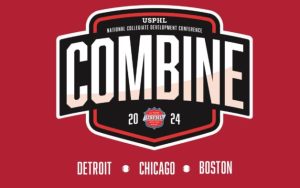From the Trainer’s Room: Heat illness

With the new fall sports season just around the corner, we want to discuss the important topic of heat illness, or Exertional Heat Illnesses (EHIs).
EHIs can be a very serious medical emergency that can cause serious damage to your body and even lead to death. The risk of EHIs are ever present during exercise in the heat but can also occur in “normal” environmental conditions. It is important to understand how EHIs occur and how to spot the signs and symptoms of EHIs in order to prevent emergency medical conditions and/or death.
There are five classifications of EHIs according to the National Athletic Training Associations (NATA) position statement:
— Exercise-Associated Muscle Cramps (EAMCs) – they are sudden or sometimes progressively and noticeably evolving, involuntary, painful contractions of skeletal muscle during or after exercise. The signs and symptoms of mild EAMCs are tics, twinges, stiffness, tremors, or contracture, and may or may not be painful. Although causes are not fully confirmed, proposed factors and conditions include dehydration, electrolyte imbalances, altered neuromuscular control, fatigue, or any combination of these factors.
— Heat Syncope – orthostatic dizziness (fainting). Often occurs in unfit or heat-unacclimatized persons who stand for a long period of time in heat or during sudden changes in posture, especially when wearing a uniform or insulated clothing that encourages and eventually leads to maximal skin vasodilation (more blood near the skin). The factors that can lead to heat syncope are dehydration, venous (vein) pooling of blood, reduced cardiac filling, or low blood pressure with resultant cerebral ischemia (inadequate blood supply to the brain). Heat syncope usually occurs during the first 5 days of unaccustomed heat exposure (e.g. during preseason training), before the blood volume expands and cardiovascular adaptations are complete, and in those with heart disease or taking diuretics.
— Heat Exhaustion – the inability to effectively exercise in the heat, secondary to a combination of factors, including cardiovascular insufficiency, hypertension, energy depletion, and central fatigue. This condition occurs when the core body temperature is elevated (105ºF) and is often associated with a high rate or volume of skin blood flow, heavy sweating, and dehydration. It occurs usually in hot or humid conditions, but it can also occur in normal environmental conditions with intense physical activity.
— Heat Injury – is a moderate to severe heat illness characterized by organ and tissue injury associated with sustained high body temperature resulting from strenuous exercise and environmental heat exposure. (Body temperature is not always greater than 105ºF.
— Exertional Heat Stroke (EHS) – this is the most severe EHIs!! it is neuropsychiatric impairment and a high core temperature, typically above 105º F. This is due to the combination of the body’s increase in core temperature caused by metabolic heat production and environmental heat load. The thermoregulatory system becomes overwhelmed due to excessive heat production and/or inhibited heat loss (i.e., decreased sweating or decreased ability to evaporate sweat). The first sign of EHS is central nervous system dysfunction which includes: collapse, aggressiveness, irritability, confusion, seizures, and altered consciousness. EHS can progress to a systemic inflammatory response and multi-organ system failure unless promptly and correctly recognized and treated.
WARNING: The risk of morbidity and mortality increase the longer an individual’s body temperature remains elevated above 105 degrees.
Prevention and Treatment of Exertional Heat Illness
Each exertion heat illness is not treated the same. (For full details on prevention, recognition, and treatment of EHIs click the link at the end of this article.)
Prevention
• Pre-participation medical screening before the start of the season to identify risk factors of heat illness.
• Acclimatized to the heat gradually over 7-14 days.
• Athletes who are currently sick with viral infections or other illness or have a fever or serious skin rash should not participate until the condition is resolved.
• Maintain hydration and appropriately replace fluids lost through sweat during and after games and practices. Eat or drink sodium-containing foods.
• Get proper sleep and rest (at least 7 hours a night).
• Eat a balance diet to replenish energy reserves.
• Rest breaks during physical activity should be planned.
Treatment
• Exercise-Associated Muscle (Heat) Cramps
• Treatment – Stop exercising, provide sodium-containing beverages
• Recovery – Often occurs within minutes to hours
• Heat Syncope
• Treatment – Lay patient supine and elevate legs to restore central blood volume
• Recovery – Often occurs within hours
• Heat Exhaustion
• Treatment – Cease exercise, remove from hot environment, elevate legs, provide fluids
• Recovery – Often occurs within 24 hours; same-day return to play not advised
• Exertional Heat Stroke
• Treatment – Immediate whole-body cold-water immersion to quickly reduce core body temperature and call 911
• Recovery – Highly dependent on initial care and treatment; further medical testing and physician clearance required before return to activity
Knowing what to look out for and how to treat exertional heat illnesses could be lifesaving. Planned ahead and be aware of environmental conditions during physical activity. Environmental conditions do not need to be at extreme levels for EHIs to occur. Be prepared and be ready to act if needed. When in doubt, sit out.
For more information, visit NATA.org.
Ryan Ramirez is a certified athletic trainer at Compete Sports Performance and Rehab in Orange County. To learn more, check out the Compete website.
(August 15, 2023)








